Jason R. Webb has recently shared a piece of scrimshaw he finished not long ago on an oval cabochon for a nurse. The sequence is below from start to finish, and as you can see he does all of the scrimming before he adds the ink. The tool appears to be a custom grind that has a steeper angle – an option if you contact Coulter Precision Tools. Jason writes:”…I use the stock 40° about half the time, but I also have Charles Coulter make me 30° and 35° extended tips for very fine lines. I tried a couple 20° tips but they snapped very easily as the carbide is brittle. The 30° are quite delicate, I really have to be conscious of the pressure, the point in the photo I sent you is a 30°. …” Thanks for sharing the pics Jason, your work is amazing!
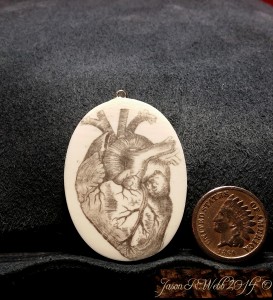
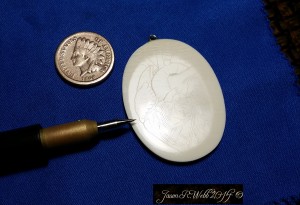
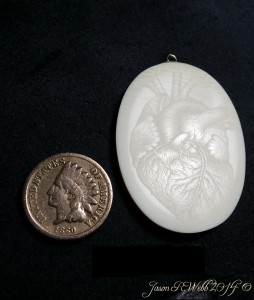
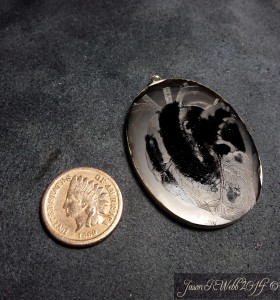
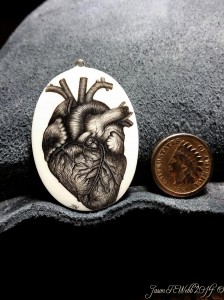
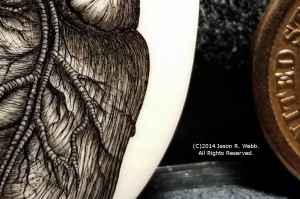
Magical work but what do you use for a magnifier because the line separation is so miniscule?
I use an optivisor with a #10 lens, so I have to keep my face a few inches from the piece while I’m scratching. The reason my line separation is so miniscule (with shading) is because I don’t put each individual line in a specific spot, I just use a quick but controlled hand motion, being careful to follow each curve. The majority of the time I can only use one eyeball to see what I’m doing, since I depend on the light’s reflection to see my scratches. If I close one eye, I can see the light and my scratches, if I switch eyes without moving my head, the reflection of the light isn’t there and I can’t see my scratches. I have 2 separate lamps now, I am going to see if this helps with my current project. When it is done I will send the photos to Andrew, thanks for the compliment on the heart:)